Cutting Back
My Apprenticeship in the Gardens of Kyoto
At thirty-five, Leslie Buck made an impulsive decision to put her personal life on hold to pursue her passion. Leaving behind a full life of friends, love, and professional security, she became the first American woman to learn pruning from one of the most storied landscaping companies in Kyoto. Cutting Back recounts Buck’s bold journey and the revelations she had along the way.
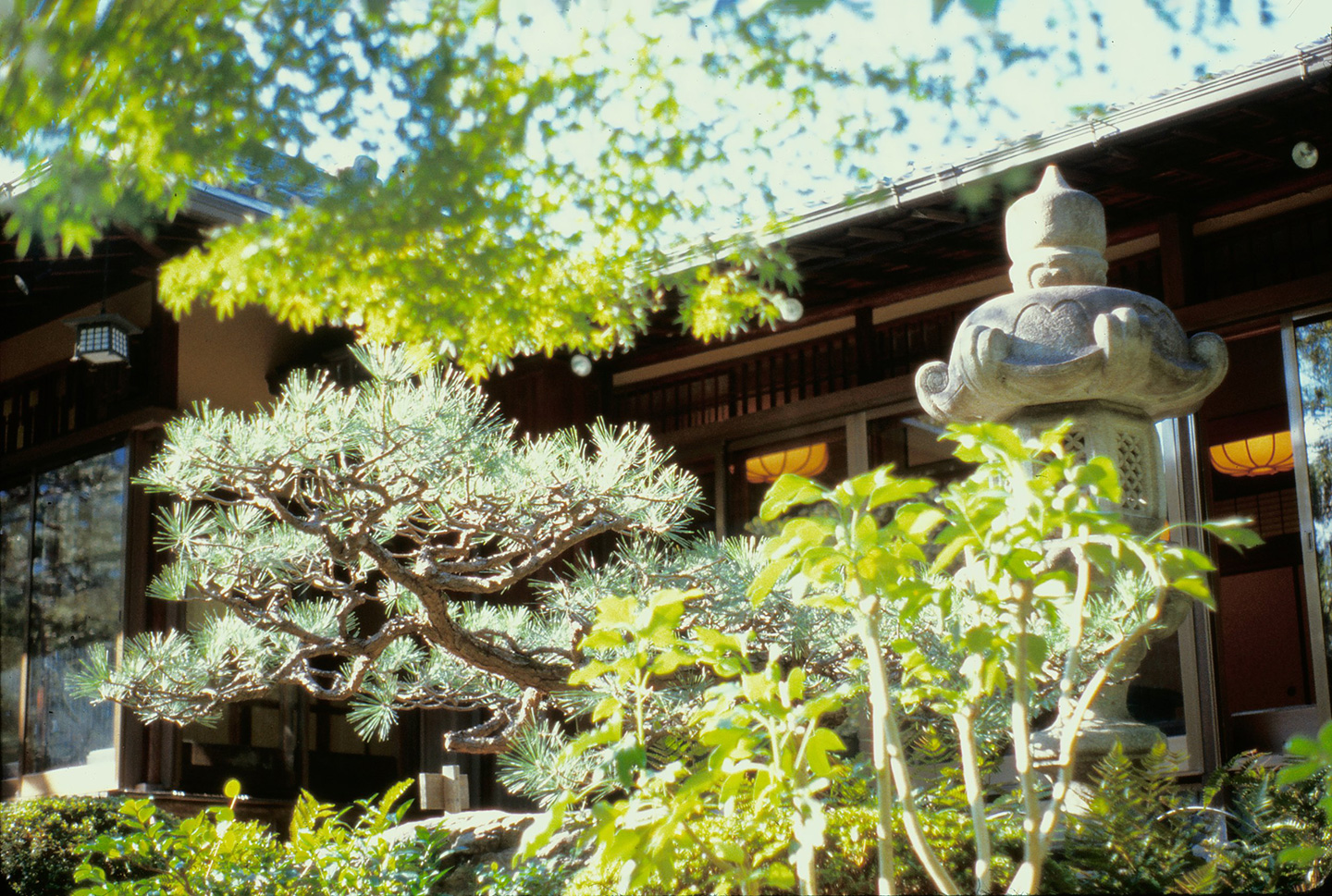
PHOTO Leslie Buck – MATSU PINE | At the beginning of Leslie Buck’s garden apprenticeship, her crew worked in an historic Kyoto restaurant on a canal. This little matsu at the top of a hill near the restaurant established Leslie’s position in the company for the rest of her journey.
“An unusual and entertaining memoir.” —New York Times Book Review
During her apprenticeship in Japan, she learned that the best Kyoto gardens look so natural they appear untouched by human hands, even though her crew spent hours meticulously cleaning every pebble in the streams. She was taught how to bring nature’s essence into a garden scene, how to design with native plants, and how to subtly direct a visitor through a landscape. But she learnt the most important lessons from her fellow gardeners: how to balance strength with grace, seriousness with humor, and technique with heart.
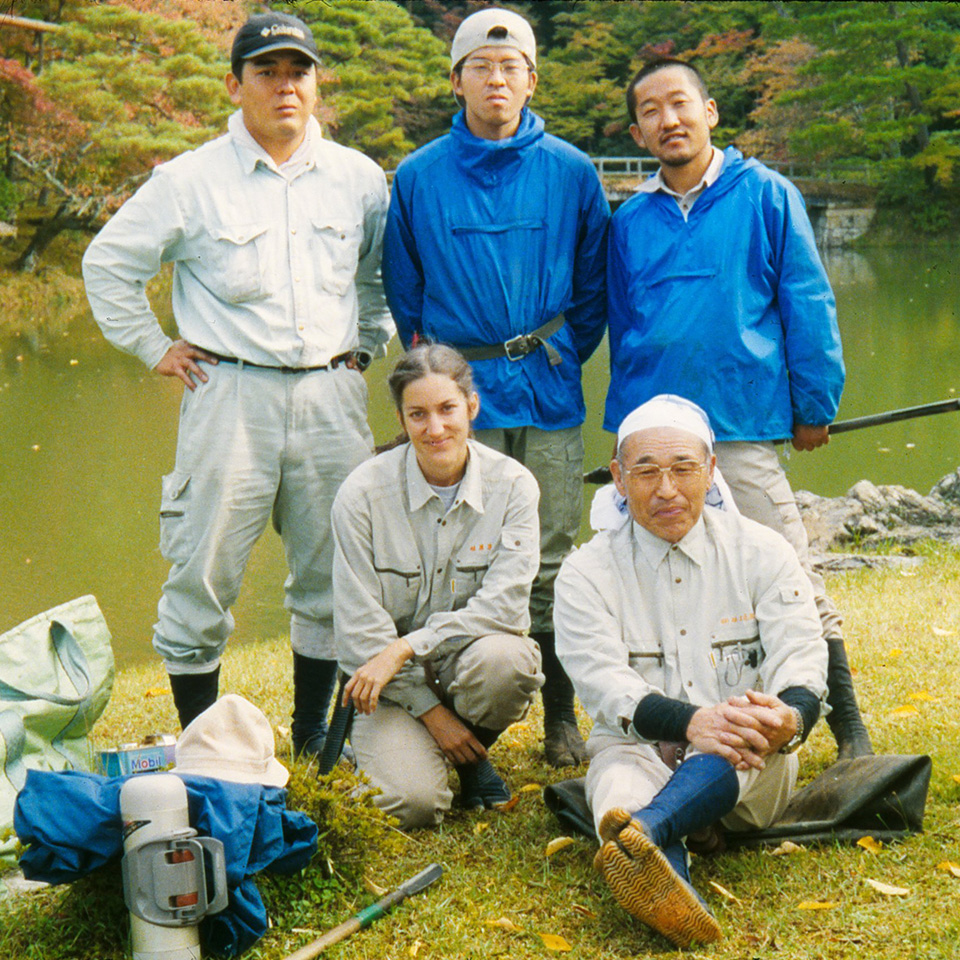
PHOTO Leslie Buck – Uetoh Zohen | Here are all the sentei-shi in the Uetoh Zohen pruning crew in a rare moment of stillness. Top row (left to right): Saito-san, Masahiro-san, Kei Shoya-san; bottom row (left to right): Leslie-san and the crew leader Naka-ji-san.
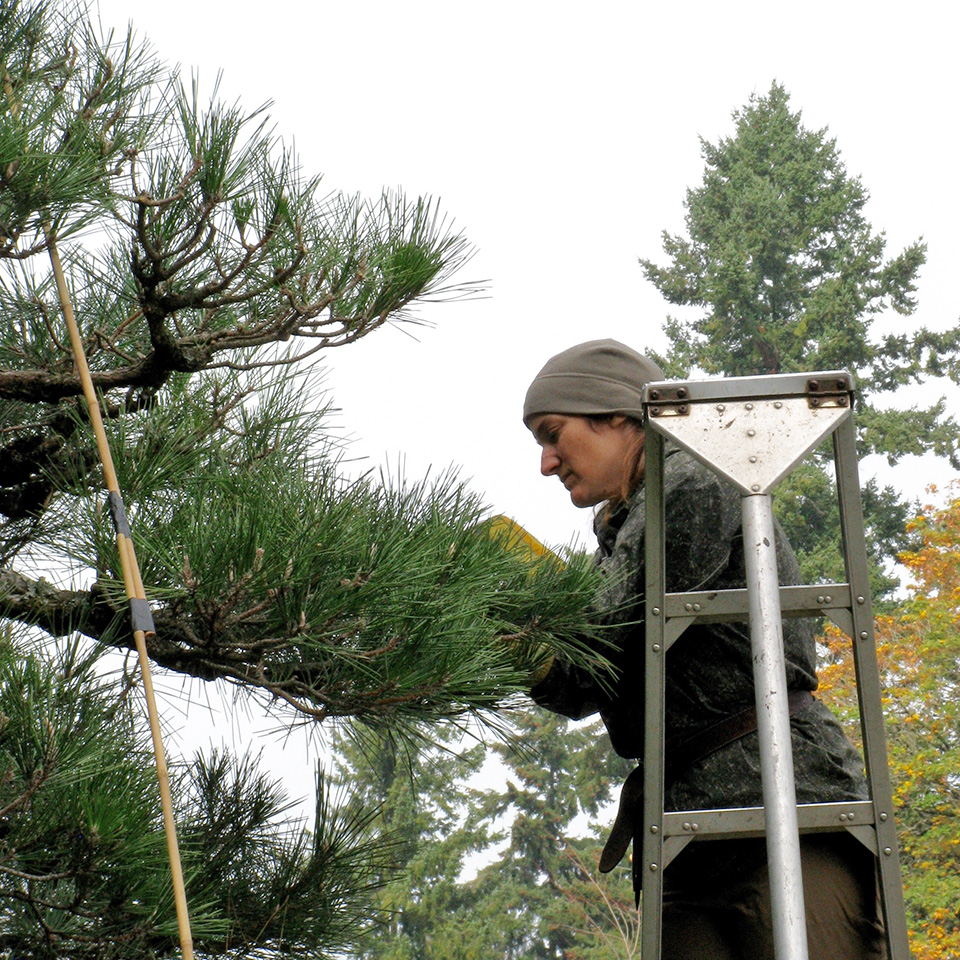
PHOTO Leslie Buck – Hashigo | Here is Leslie on her favorite aluminum, tripod hashigo (ladder), volunteering at the Portland Japanese Garden, with some of the most talented gardeners in the United States.
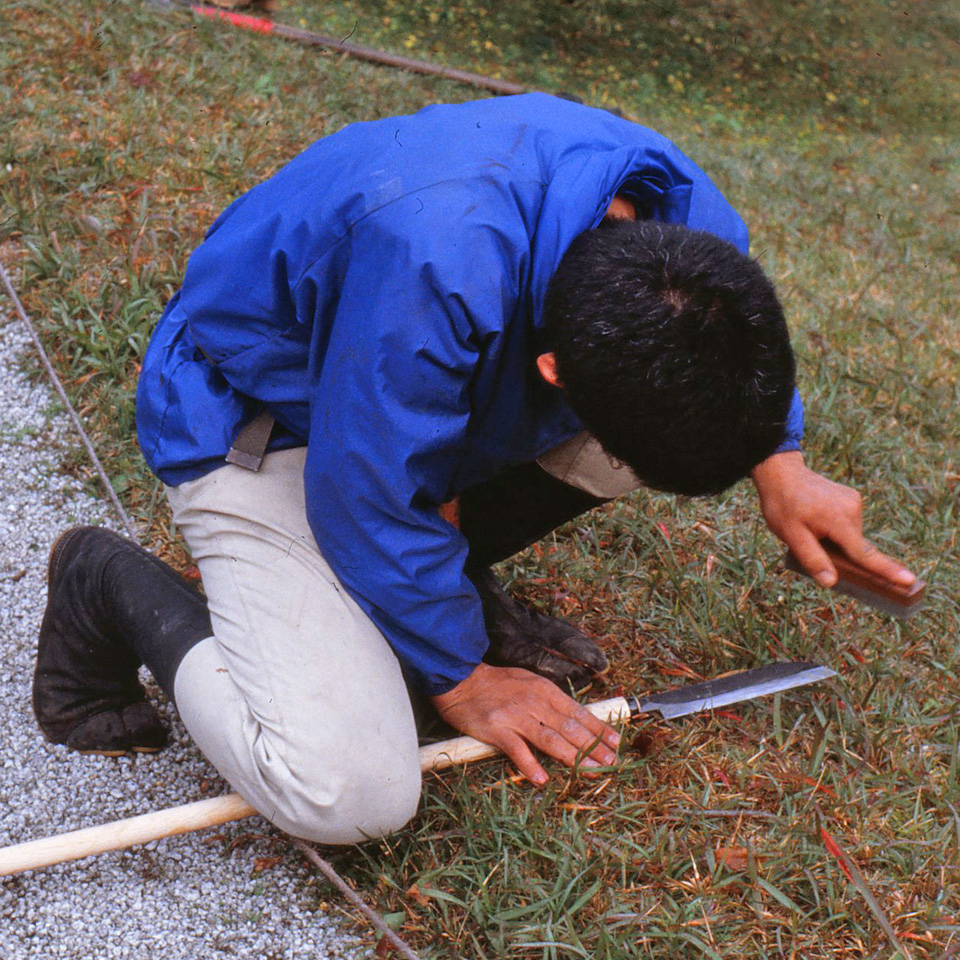
PHOTO Leslie Buck – Kama | Here is Leslie’s coworker, Kei Shoya, whose English helped her understand traditional ways. He is demonstrating the sharpening of kama at Shugakuin Imperial Villa. Kei is now an active landscaper in Kyoto, and sometimes California, with his own company.
“As much a story of bravery and the challenge of adapting to an unfamiliar culture as it is of horticulture. Anyone contemplating a brave career gamble will learn from it.”
—SAN FRANCISCO CHRONICLE
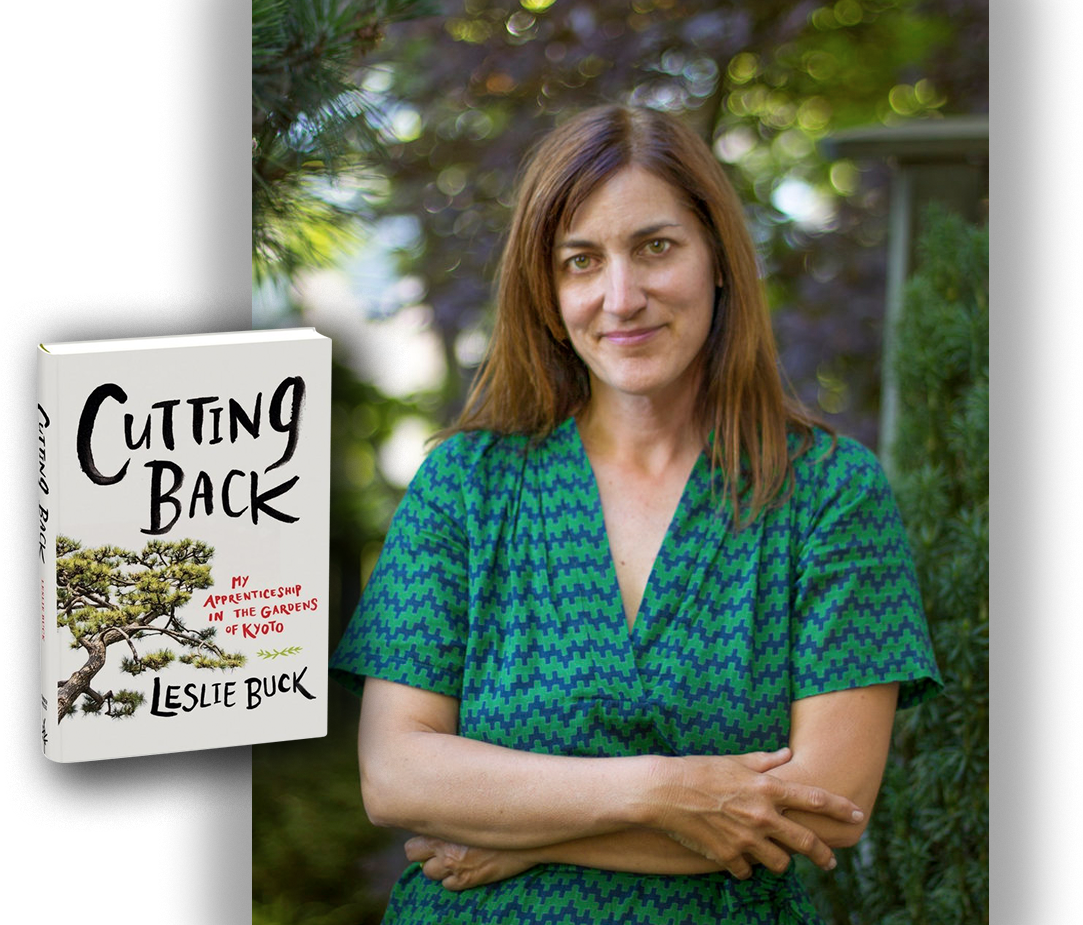
Shop These Resources
This small collection of high quality garden tools, built for durability and everyday use, will serve you for many years to come.
“An unusual and entertaining memoir . . . . she learns—about durability and resilience. She learns to prune trees exquisitely. Most of all, she learns that ‘an apprentice must . . . be the good student.’ Not a bad lesson for any gardener.” —New York Times Book Review
“Her writings, inevitably, are a reflection on the contrasts between the roles of the gardener in two very different cultures.” —The Washington Post
“Read Cutting Back for insight into Japanese gardening culture, for descriptions of naturalistic Japanese gardens, or if you enjoy travel memoirs.” —NYBG’s Plant Talk
“If you love losing yourself in natural settings, this memoir is definitely for you. . . . the life lessons Buck learns away from her pruning shears will appeal to any reader.” —Bustle
“Leslie Buck’s compelling story bring together three themes—a woman’s journey in life, adaptation to a new and strange culture, and discovery of a career that fulfills through its challenges. The connecting threads are Japanese gardens and gardening. Gardening is both Buck’s profession and a metaphor for Buck’s reflection on her life as a cycle of planting, nourishing, and pruning to achieve rich yet balanced growth. These familiar themes feel fresh in Buck’s light yet sensitive prose that transmits her adventurous spirit yet reflective soul. Japanese gardens have long been recognized as special, almost magical, places that inspire and nourish. Leslie Buck’s memoir gives them a human dimension.” —Kendal H. Brown, author of Quiet Beauty: The Japanese Gardens of North America
“Leslie Buck offers a graciously pruned story about learning garden care in Japan, where no-one-telling-you-how leads to intimately discovering for yourself what’s what–a learning that is “entrenched in your body.” Leslie tells her story with charm and good-humor.” —Edward Espe Brown, author of Tassajara Bread Book
“Told with beautiful, carefully crafted language and a perceptively candid voice. . . . the book’s core is its intuitive appreciation for nature.” —Forward Magazine
“As much a story of bravery and the challenge of adapting to an unfamiliar culture as it is of horticulture. Anyone contemplating a brave career gamble will learn from it.” —San Francisco Chronicle
“Informative and inspiring. . . . the book will appeal to both gardeners and non-gardeners. As much as Buck’s story is about Japanese garden aesthetics, it is also about stepping out of your comfort zone and taking a chance.” —The American Gardener
“This should be on the reading lists of university Japanese studies courses because of its insights into the country’s apprenticeship systems.” —Post Magazine
“A fascinating personal account, and not just for gardeners.” —The Irish Garden
“A book based on direct experience and encounter, stemming as much from the heart as from backbreaking toil, aching joints and calloused hands.” —The Japan Times
